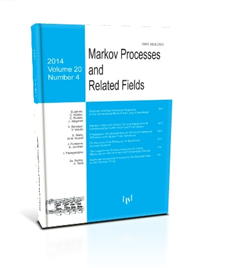The Hubbard Model: Introduction and Some Rigorous Results
H. Tasaki
1996, v.2, Issue 1, 183-208
ABSTRACT
In this article, we review some rigorous results on the Hubbard model. We have tried to make the article accessible to nonexperts by describing basic definitions and elementary materials in detail. The Hubbard model is a ``highly oversimplified model'' for electrons in a solid which interact with each other through extremely short ranged repulsive (Coulomb) interaction. The Hamiltonian of the Hubbard model consists of two pieces; $H_hop$ which describes quantum mechanical hopping of electrons, and $\Hint$ which describes nonlinear repulsive interaction. It turns out either $\Hhop$ or $H_int$ alone is easy to analyze, and does not favor any specific order. But their sum $H=H_hop+H_int$ is believed to exhibit various nontrivial ordering including antiferromagnetism, ferrimagnetism, ferromagnetism, and superconductivity. In the present article we review some mathematically rigorous results on the Hubbard model which shed light on ``physics'' of this fascinating model. We concentrate on magnetic properties of the model at its ground states. We discuss Lieb-Mattis theorem on the absence of ferromagnetism in one dimension, Lieb's important theorem for half-filled model on a bipartite lattice and three rigorous examples of saturated ferromagnetism due to Nagaoka, Mielke and Tasaki.
Keywords: itinerant ferromagnetism,Hubbard model
COMMENTS
Please log in or register to leave a comment

